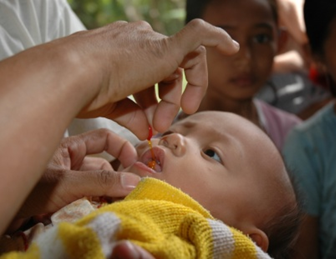Speeches Shim

Since 2000, Cambodia has made remarkable improvements in its health outcomes, from significantly raising life expectancy at birth to over 71 years, to reducing child mortality by more than half -- to fewer than 35 deaths among children under 5 per 1,000 live births. Significant increases in deliveries attended by skilled health workers have contributed to dramatic reductions in maternal mortality. With significant assistance from USAID, the rate of fully immunized children rose from 40 percent to 73 percent. In the poorest communities where USAID focuses its support, over three quarters of infants are being exclusively breastfed for their first six months of life. Malnourishment has also dropped significantly. With USAID support, the national stunting rate dropped from 40 percent in 2010 to 32 percent in 2014. From 2000 to 2014, the proportion of Cambodian households using an improved water source doubled from 32.5 percent to 65 percent.
USAID has contributed to these impressive gains by helping strengthen national policies and systems, expand community outreach, and improve access to quality services. USAID also assisted in the expansion of the Health Equity Fund (HEF) -- a health insurance framework for the poor -- to all health facilities nationwide. This has allowed more than 3 million poor Cambodians to access health services free of charge. As the Royal Government of Cambodia takes on greater governance and financial responsibility for the HEF, USAID is providing technical assistance and capacity building to enable the government to take over monitoring and certifying HEF payments. Underpinning all this work is USAID support to strengthen the public-sector health system, including information and logistics, and to help achieve Universal Health Coverage (UHC) for Cambodia. USAID also supports the development of a system to strengthen health care regulation, in order to ensure a minimum standard of quality of care, with particular attention to the private sector. In connection with this, the government of Cambodia has created a professional council system and a legal framework to regulate health care providers. A significant and core area of investment for USAID is in health financing to help the Royal Government of Cambodia invest more domestic resources in quality health and social health protection programs, address critical issues and increase the sustainability and efficiency of health expenditures. A significant advance toward Universal Health Coverage came in 2017, when the Royal Government of Cambodia established the National Social Protection Policy Framework to harmonize and strengthen the existing array of social protection programs. USAID will provide technical support to help put this policy framework into action, by sharing global best practices and lessons learned, supporting governance arrangements and building capacity of government officials from the multiple ministries engaged in the effort.
USAID is also supporting Cambodia to reach its ambitious goals of eliminating HIV and malaria by 2025. USAID’s programs have helped reduce HIV prevalence from 1.7 percent in 1998 to 0.6 percent in 2015 by improving the quality of HIV services, developing innovative ways of finding the last cases and improving the cost effectiveness of the HIV response. As of June 2017, with USAID and PEPFAR technical assistance, over 58,000 people -- or about 80% of people living with HIV -- are receiving lifesaving treatment. While the number of malaria cases was almost halved between 2004 and 2014, the Cambodia-Thailand border continues to be an epicenter of artemisinin-resistant malaria. Through the President’s Malaria Initiative (PMI),USAID is strengthening malaria control and prevention and surveillance and monitoring drug resistance. USAID developed a scalable, evidence-based elimination model and will scale up this high quality model for malaria elimination to other districts. USAID infectious disease programs also supported the national TB-control center to reduce TB prevalence and deaths by more than half, while continuing to improve the quality of TB services. USAID helps to improve detection rates of TB cases and maintain treatment success rates of up to 90 percent. To prevent emerging pandemic threats and enhance global health security, USAID is building partnerships and has initiated biological and behavioral surveillance activities targeting animals and humans and activities to strengthen pre-service training of key health and veterinary workers to address the pathways for disease emergence, amplification, and spread.


Comment
Make a general inquiry or suggest an improvement.